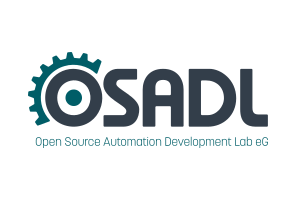Dates and Events:
|
OSADL Articles:
2023-11-12 12:00
Open Source License Obligations Checklists even better nowImport the checklists to other tools, create context diffs and merged lists
2022-07-11 12:00
Call for participation in phase #4 of Open Source OPC UA open62541 support projectLetter of Intent fulfills wish list from recent survey
2022-01-13 12:00
Phase #3 of OSADL project on OPC UA PubSub over TSN successfully completedAnother important milestone on the way to interoperable Open Source real-time Ethernet has been reached
2021-02-09 12:00
Open Source OPC UA PubSub over TSN project phase #3 launchedLetter of Intent with call for participation is now available |
Real Time Linux Workshops
1999 - 2000 - 2001 - 2002 - 2003 - 2004 - 2005 - 2006 - 2007 - 2008 - 2009 - 2010
Ninth Real-Time Linux Workshop on November 2 to 4, 2007, in Linz, Austria
Providing Support for Multimedia-Oriented Applications under Linux
Sebastian Schöning
Linux as a general-purpose operating system is designed to support the services required by most generic applications. Today, there is a new generation of real-time applications with are interactive, computation-intensive, and I/O-bound. In the past years, operating systems research has addressed each of these challenges in turn. Yet frequently, when an application requires the support of all three aspects in unison, performance suffers. In particular, this is the case for multimedia-oriented applications. These applications have to meet soft real-time requirements, demand for a high data throughput, and need to interact with the user. Further, they are constructed in a highly modular fashion with a multitude of concurrent and interdependent activities.
The software market offers either dedicated multimedia applications or middleware solutions, each addressing these issues at a high level: The solutions are built upon existing operating system interfaces and they rather focus on the support for specific multimedia functionalities, such as decoders, instead of providing an appropriate operation infrastructure for a wider range of applications within that area.
This paper targets the integration of multimedia-oriented applications from a new angle. We improve the support for such applications by means of dedicated system services: Instead of the common process model, our execution paradigm is based on the process network model. This model is an established formalism in the field of embedded systems. We leverage the theoretic findings and implement them into a real operating system. Additionally, we contribute dedicated buffer management and scheduling facilities by exploiting the advantages of the process network model. The implementation is realized both as a kernel-space and a user-space solution. For the kernel-space solution, we extend the Linux system-call interface to use the full potential of kernel-internal features.




